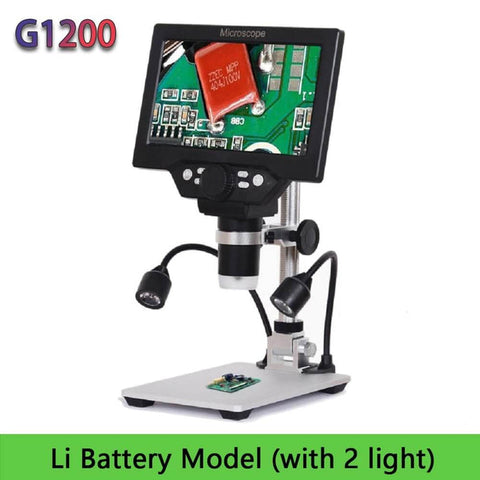As technology advances, so does the demand for more precise and efficient electronics. The development of advanced electronics has been a game-changer in the modern world, from communication to medical research, from transportation to energy production. The importance of precise and accurate electronic devices has led to the need for more sophisticated tools that can accurately analyze the intricate details of electronic components. This is where the trinocular microscope for electronics comes in, a cutting-edge tool that can help you analyze electronic components with accuracy and precision.
In this article, we will explore the trinocular microscope for electronics and its benefits, features, and applications. We will also answer some frequently asked questions about trinocular microscopes.
What is a Trinocular Microscope for Electronics?

A trinocular microscope for electronics is a specialized tool designed for the analysis and observation of electronic components. It has three eyepieces, one for the researcher and two for imaging. The trinocular microscope allows researchers to observe and analyze electronic components with high magnification and resolution. It provides a clear and detailed image of the sample, allowing researchers to identify defects or irregularities.
How Does a Trinocular Microscope for Electronics Work?
A trinocular microscope for electronics works by using a combination of lenses, mirrors, and cameras to magnify and capture images of electronic components. The three eyepieces allow for the researcher to view the sample directly, while the other two eyepieces are used to capture high-quality images of the sample. The images can then be analyzed and stored for further analysis or documentation.
Benefits of Using a Trinocular Microscope for Electronics
-
High Magnification: A trinocular microscope for electronics offers high magnification, allowing researchers to view and analyze electronic components with incredible detail.
-
Accurate Analysis: The precise imaging provided by a trinocular microscope allows researchers to accurately identify defects or irregularities in electronic components.
-
Improved Efficiency: A trinocular microscope can save time and increase efficiency in research and analysis, as it can quickly and accurately analyze electronic components.
-
Enhanced Documentation: The captured images can be saved and used for documentation or presentation purposes, allowing for clear and detailed explanations of the research.
Features of a Trinocular Microscope for Electronics
-
High-Resolution Camera: The high-resolution camera of a trinocular microscope allows for clear and detailed imaging of electronic components.
-
LED Illumination: The LED illumination provides bright and clear lighting, making it easier to view and analyze electronic components.
-
Adjustable Focus: The adjustable focus allows for precise imaging and analysis of electronic components.
-
Trinocular Head: The trinocular head provides the ability to capture and store images, allowing for documentation and presentation purposes.
Applications of a Trinocular Microscope for Electronics
-
Circuit Board Inspection: A trinocular microscope can be used to inspect and analyze circuit boards, identifying defects and irregularities that can affect the performance of the device.
-
Soldering Inspection: Soldering inspection is an essential part of electronics manufacturing. A trinocular microscope can provide a clear and detailed image of the soldering, allowing for accurate analysis and inspection.
-
Semiconductor Analysis: A trinocular microscope can be used to analyze semiconductors, allowing for accurate identification of defects and irregularities that can affect their performance.

